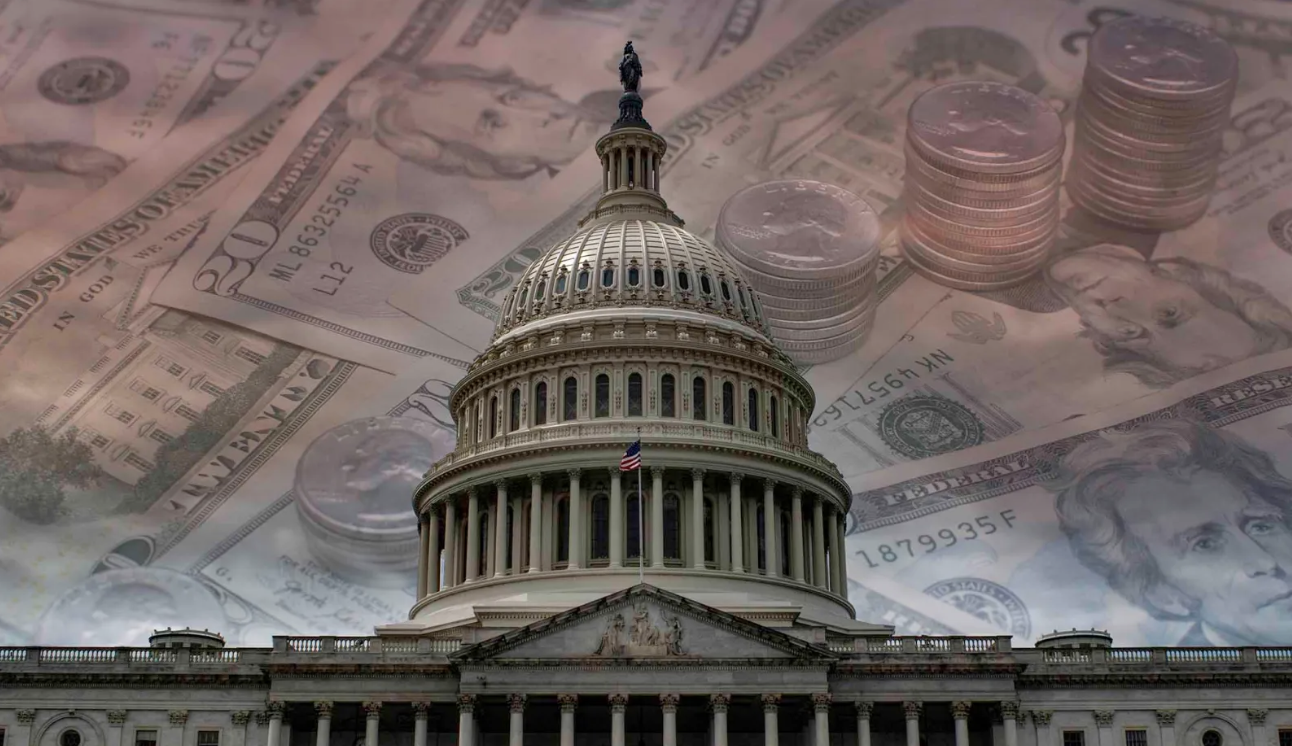By: Chris Edwards – nationalreview.com –
Cutting federal aid to the states would reduce our national debt while improving governance.
The nation is headed toward a fiscal crisis. This year’s Fiscal Responsibility Act (FRA) was supposed to help change our economic course, but Congress may soon pass a large supplemental bill for wars and border security without offsetting the costs elsewhere. This is a pattern — passing fiscal-restraint laws but then bypassing them soon after, as with the Gramm-Rudman-Hollings deficit caps of the 1980s and the Budget Control Act spending caps of the 2010s.
The federal government has never been legally required to balance its budget, but prior to the 1930s, a strong anti-debt culture steered lawmakers toward fiscal responsibility. Congress balanced the budget in 68 percent of the years between 1791 and 1929.
That changed in the mid-20th century with the rise of Keynesian economics, which planted the false idea in Congress that deficit spending boosts growth. At the same time, Congress began putting more spending on autopilot as “entitlements,” thus ducking responsibility for rising program costs. Congress has balanced the budget in just 14 percent of the years since 1930, and deficits are trending ever higher.
Tougher federal spending caps are needed, but sadly any new restraints would probably be undermined by the twin fiscal evils of Keynesianism and autopilot entitlements.
Fortunately, there is another way to avert fiscal disaster: phase out $1.3 trillion a year in federal subsidies for state and local activities such as K–12 education, low-income housing, welfare, urban transit, and Medicaid. Devolving funding for state and local activities would slash federal deficits and stabilize the debt.
As the federal government cut subsidies, the states could downsize programs or they could fill the funding void with their own resources. In the latter case, the states would do so with current revenues — not debt — because they have extensive constitutional, statutory, and economic restraints limiting debt issuance.
At $3.3 trillion, total state- and local-government debt is just one-eighth of federal debt. And much of it is supported by non-tax revenues, such as charges for utilities, colleges, and hospitals. Moody’s Investors Service calculates that state-level “tax-supported” debt is only $617 billion.
Why is state debt so low? Forty-nine states have balanced-budget requirements. Forty-three states impose legal limits on either their outstanding debt or annual debt-servicing costs. Also, general-obligation debt, which is backed by taxes, typically must be approved by voters or supermajorities in legislatures.
Governors in 43 states have line-item vetoes allowing them to strike wasteful spending from budgets. And about half the states have limits on the amount of, or annual growth in, tax revenues or spending. The limits are tied to metrics such as state personal income.
All 50 states use rainy-day funds, which allows them to avoid extra borrowing during downturns. In years with strong economic growth, states put part of tax revenues aside in the funds, and in lean years the funds can be withdrawn to maintain budget balance.
In addition to these budget rules and procedures, states are steered toward fiscal responsibility by competitive pressures. Credit-rating agencies examine state finances and make assessments that affect interest rates on state debt. The process encourages fiscal prudence because lawmakers know that higher interest payments will displace other priorities in their budgets.
Currently, the federal government accounts for about two-thirds of the nation’s government spending, with state and local governments accounting for one-third. We face a debt crisis because spending is dominated by the level of government that is devoid of restraints. We should slash federal aid to the states to invert that structure and aim for the fiscal structure of Switzerland, where just one-third of government spending is federal.
Cutting aid to the states would reduce federal debt but also improve governance. It would remove a layer of wasteful federal bureaucracy from local activities such as the K–12 schools. It would reduce fraud and abuse because state bureaucrats would be spending state taxpayer funds, not “free” funds from Washington.
By funding their own programs, the states could design programs to match local preferences without one-size-fits-all federal mandates. Such a decentralized fiscal structure would also boost democracy and political accountability because decision-making would move from unelected federal bureaucrats to elected state and local officials.
Ending whole categories of state aid — such as for schools, transit, or low-income housing — won’t be politically easy. But such cuts are more likely to be permanent reforms than FRA-style caps that are easy to bypass.
Imposing tighter federal spending controls would be progress, but we do not need to reinvent the wheel. We just need to move funding for state and local activities down to the states, which have built-in layers of fiscal restraint. We should take advantage of America’s federalist structure to tackle debt, and we should cut federal programs that the states can fund by themselves.
To see this article in its entirety and to subscribe to others like it, mplease choose to read more.
Source: Federal Debt Crisis: Cut Federal Aid to States | National Review
 Listen Online
Listen Online Watch Online
Watch Online Find a Station in Your Area
Find a Station in Your Area









 Listen Now
Listen Now Watch Online
Watch Online
